Xuetao Li
DexFlow: A Unified Approach for Dexterous Hand Pose Retargeting and Interaction
May 02, 2025Abstract:Despite advances in hand-object interaction modeling, generating realistic dexterous manipulation data for robotic hands remains a challenge. Retargeting methods often suffer from low accuracy and fail to account for hand-object interactions, leading to artifacts like interpenetration. Generative methods, lacking human hand priors, produce limited and unnatural poses. We propose a data transformation pipeline that combines human hand and object data from multiple sources for high-precision retargeting. Our approach uses a differential loss constraint to ensure temporal consistency and generates contact maps to refine hand-object interactions. Experiments show our method significantly improves pose accuracy, naturalness, and diversity, providing a robust solution for hand-object interaction modeling.
Learning Robust Grasping Strategy Through Tactile Sensing and Adaption Skill
Nov 13, 2024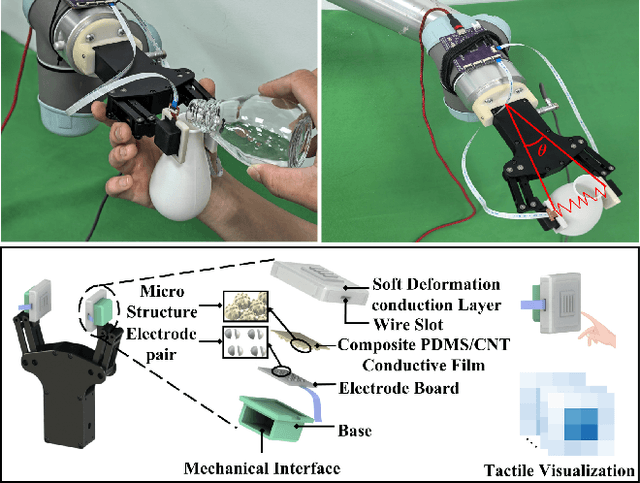
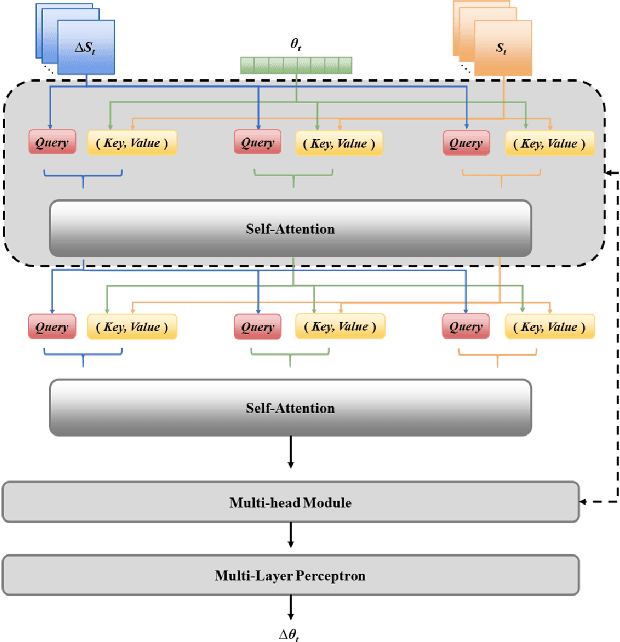
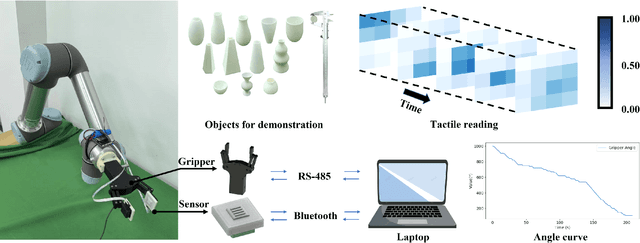
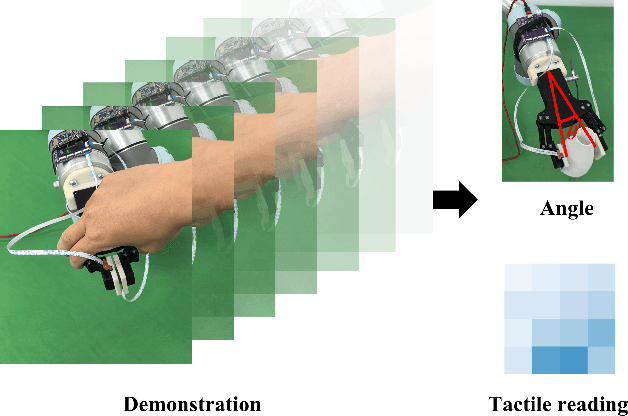
Abstract:Robust grasping represents an essential task in robotics, necessitating tactile feedback and reactive grasping adjustments for robust grasping of objects. Previous research has extensively combined tactile sensing with grasping, primarily relying on rule-based approaches, frequently neglecting post-grasping difficulties such as external disruptions or inherent uncertainties of the object's physics and geometry. To address these limitations, this paper introduces an human-demonstration-based adaptive grasping policy base on tactile, which aims to achieve robust gripping while resisting disturbances to maintain grasp stability. Our trained model generalizes to daily objects with seven different sizes, shapes, and textures. Experimental results demonstrate that our method performs well in dynamic and force interaction tasks and exhibits excellent generalization ability.
Guided Self-attention: Find the Generalized Necessarily Distinct Vectors for Grain Size Grading
Oct 08, 2024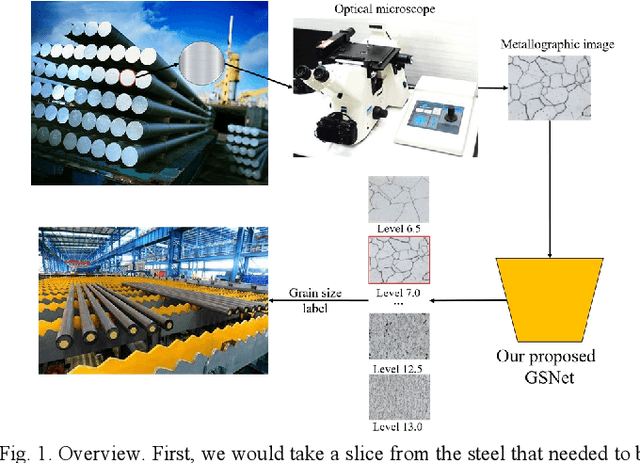

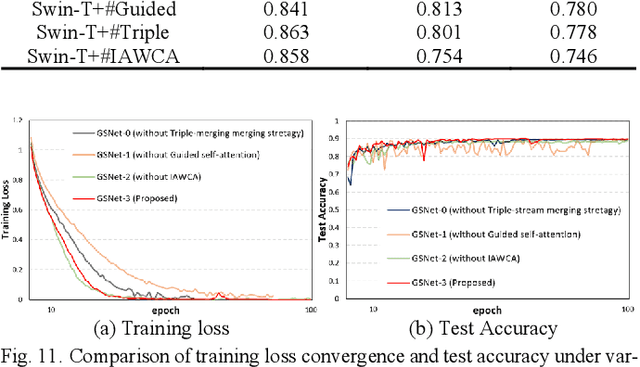

Abstract:With the development of steel materials, metallographic analysis has become increasingly important. Unfortunately, grain size analysis is a manual process that requires experts to evaluate metallographic photographs, which is unreliable and time-consuming. To resolve this problem, we propose a novel classifi-cation method based on deep learning, namely GSNets, a family of hybrid models which can effectively introduce guided self-attention for classifying grain size. Concretely, we build our models from three insights:(1) Introducing our novel guided self-attention module can assist the model in finding the generalized necessarily distinct vectors capable of retaining intricate rela-tional connections and rich local feature information; (2) By improving the pixel-wise linear independence of the feature map, the highly condensed semantic representation will be captured by the model; (3) Our novel triple-stream merging module can significantly improve the generalization capability and efficiency of the model. Experiments show that our GSNet yields a classifi-cation accuracy of 90.1%, surpassing the state-of-the-art Swin Transformer V2 by 1.9% on the steel grain size dataset, which comprises 3,599 images with 14 grain size levels. Furthermore, we intuitively believe our approach is applicable to broader ap-plications like object detection and semantic segmentation.
Learning the Generalizable Manipulation Skills on Soft-body Tasks via Guided Self-attention Behavior Cloning Policy
Oct 08, 2024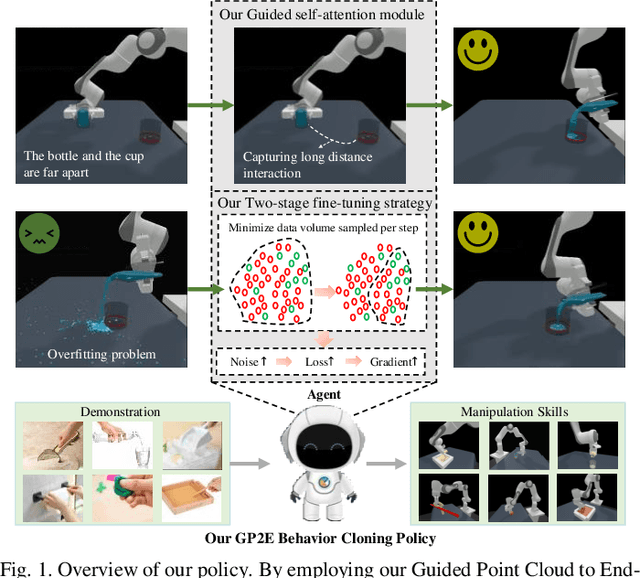
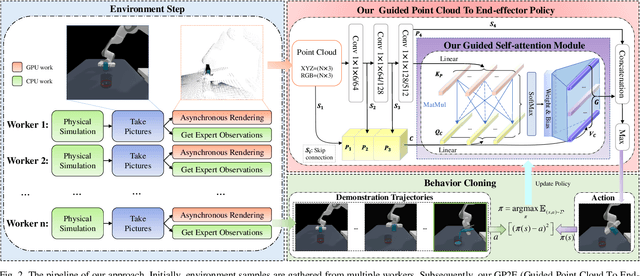
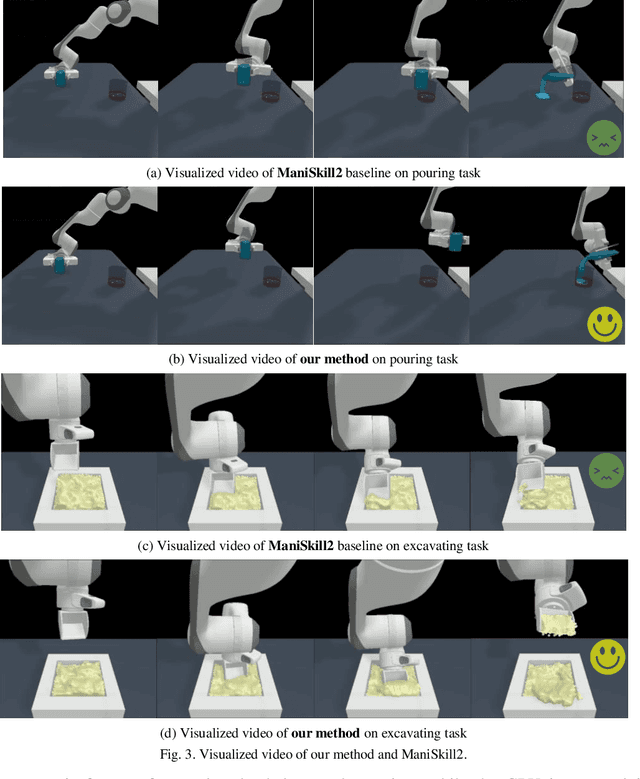
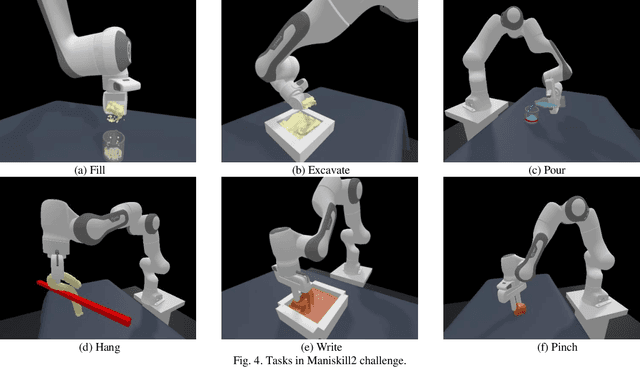
Abstract:Embodied AI represents a paradigm in AI research where artificial agents are situated within and interact with physical or virtual environments. Despite the recent progress in Embodied AI, it is still very challenging to learn the generalizable manipulation skills that can handle large deformation and topological changes on soft-body objects, such as clay, water, and soil. In this work, we proposed an effective policy, namely GP2E behavior cloning policy, which can guide the agent to learn the generalizable manipulation skills from soft-body tasks, including pouring, filling, hanging, excavating, pinching, and writing. Concretely, we build our policy from three insights:(1) Extracting intricate semantic features from point cloud data and seamlessly integrating them into the robot's end-effector frame; (2) Capturing long-distance interactions in long-horizon tasks through the incorporation of our guided self-attention module; (3) Mitigating overfitting concerns and facilitating model convergence to higher accuracy levels via the introduction of our two-stage fine-tuning strategy. Through extensive experiments, we demonstrate the effectiveness of our approach by achieving the 1st prize in the soft-body track of the ManiSkill2 Challenge at the CVPR 2023 4th Embodied AI workshop. Our findings highlight the potential of our method to improve the generalization abilities of Embodied AI models and pave the way for their practical applications in real-world scenarios.
 Add to Chrome
Add to Chrome Add to Firefox
Add to Firefox Add to Edge
Add to Edge